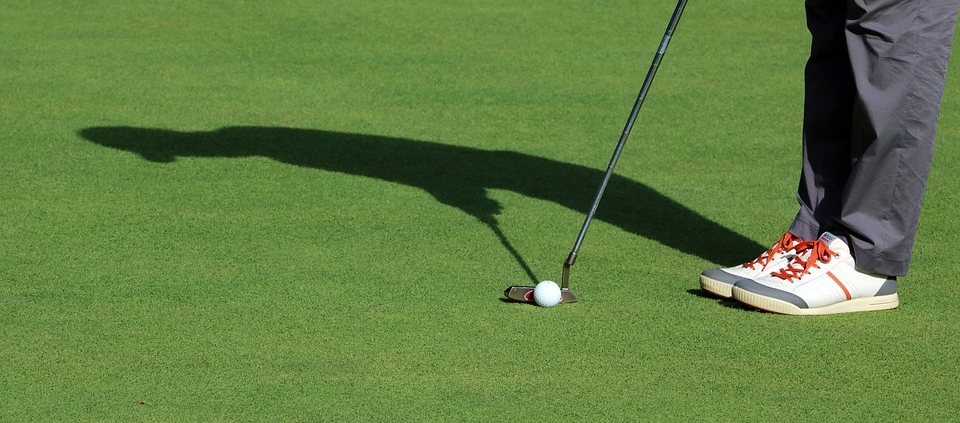FIVE DIFFERENT PUTTING GRIPS TO EXPERIMENT WITH
One afternoon a few years back I found myself golfing with my brother to test out a new putter I had bought. However, with the new putter I noticed all my putts, no matter where I was aiming, always seemed to pull left. It was after about the umpteenth putt that I had missed left when I began cursing the golf gods and thinking about giving up the sport for good. My brother, who was probably fed up with my complaining, tried to help me rectify my putting stroke.
“How to do grip your putter?” he asked.
“The same way I grip the rest of my clubs,” I replied, showing him my grip on the putter.
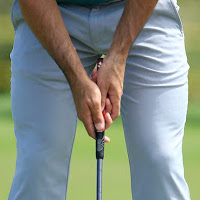
Close up of a traditional putting grip. This grip is how most golfers grip the rest of their clubs.
“Ahhh, the traditional way,” he said. “Have you thought about switching up how you hold the putter?”
“There is more than one way to hold it?”
My brother ran through about five different grips styles that he said could help stabilize my left wrist. I guess it was my left wrist wanting to flip that was messing up the alignment of my putt. I was blown away by the sheer number of creative grip styles people have found to improve their putting. After a whole summer of experimenting, I finally found a style that suits my putter and my stroke and I’ve been draining putts ever since . . . kind of.
If you are struggling with your putting stroke or just looking to change a few dynamics of your game, here are five different unconventional putting grips to experiment with this season:
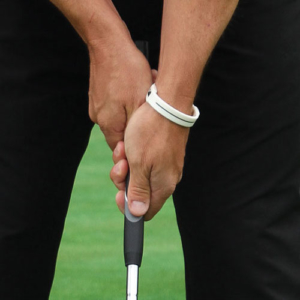
Close-up of a crosshanded or reverse style putting grip. The dominant hand goes on top.
1. Cross Hand
The crosshanded grip is essentially the reverse style to the traditional golf grip, which is why it is also sometimes referred to as the reverse grip. Instead of holding the club with your dominant hand below your nondominant, switch it around and try gripping the putter with your dominant hand above your nondominant. This will give your nondominant hand more control and give you a more balanced swing.
Pros who’ve used crosshanded grip include; Padraig Harrington, Jim Furyk, and Jordan Speith.
2. Split Hand
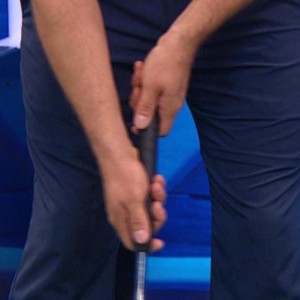
Close-up of split handed or hockey style putting grip. The longer the putter the wider the grip.
The split handed grip is essentially the traditional grip style except you unlink your hands to create some space. The nondominant hand steadies the top of the putter against your body while your dominant hand guides the putter shaft. A gap between your hands, however small, is said to increase the control over your putter and allow you to putt with greater accuracy.
Pros who’ve used split handed grip include; Natalie Gulbis, Daniel Chopra, and Happy Gilmore.
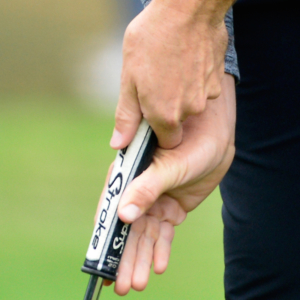
Close-up of Tommy Fleetwood’s claw or pencil style putting grip. The dominant hand holds the putter grip like a pencil.
3. The Claw
The claw or pencil grip is essentially a variation on the split handed grip style where your dominant hand is almost taken completely of the club. The nondominant hand remains steady at the top of the putter shaft with your dominant hand underneath, gripping the shaft like a pencil. You are essentially only using the thumb, index, and middle finger of your dominant hand to grip the club and bring some equilibrium to your swing.
Pros who’ve used the claw grip include; Tommy Fleetwood, Phil Mickelson, and Sergio Garcia.
4. Palm to Palm
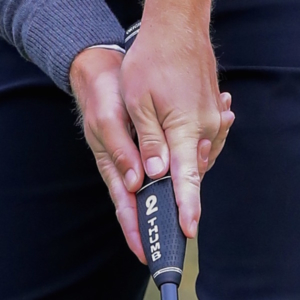
Close-up of palm to palm or prayer style putting grip. The palms are aligned and fingers overlap.
The palm to palm or prayer grip as it is sometimes called is exactly as it sounds. Instead of lining your up hands one after another like you would with a traditional grip, you bring your hands closer together by lining up your palms, wrapping your dominant hand snugly around the fingers of your nondominant. With this grip, bring your hands down from the top of the club and more to the middle of the club grip to help fix any wobbles.
Pros who’ve used the palm to palm grip include; Vijay Singh, Paul Dunne, and Matt Wallace.
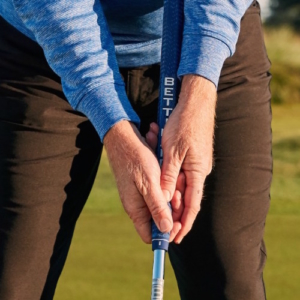
Close-up of arm lock or braced style putting grip. The shaft of the putter is braced against the lead forearm.
5. Arm Lock
The arm lock putting grip looks like a very unconventional style, but it truly minimizes your ability to move your hands during the putting stroke. This stroke is perfect for those who have the “yips.” To achieve this grip, choke up on the putter. The putter should remain “locked” to the golfer’s lead forearm (nondominant hand) through the entire putting stroke while using your dominant hand to apply pressure forces the butt-end of the grip to maintain contact with your lead forearm.
Pros who’ve used the palm to palm grip include; Bernhard Langer, Soren Kjeldsen, and Jason Dufner.

